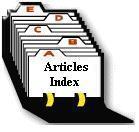American Pigeon Journal
June 1983, pages 18 & 19.
Is "Bill Popping" A Defensive Behavior In Squabs?
by Robert J. Mangile
Most pigeon fanciers are aware that half-grown squabs raise up on their legs, puff up their feathers and emit a loud "pop" as their head is thrust forward at the intruder, in a defensive threat posture. Of course it is all for naught because it is all harmless and in fact the squabs are defenseless.
The "pop" emitted has been a point of curiosity, at least for me, for many years. I have observed this behavior very closely and cannot discern where the "pop" is coming from. In the book entitled "The Pigeon", by Wendell M. Levi, page 369, paragraph 670, under the heading of "Behavior of Squabs", he states: "Many of them, upon the approach of one's finger, raise their feathers, bristling in porcupine style, rear their heads and bodies, open their beaks wide, and snap them together with a snapping or popping sound. This is accomplished by insertion of the point of the upper beak into the V of the lower, and snapping it out by pressure." Despite these comments, I could not verify that they are correct. I taped paper between the bills of young squabs and the popping sound was still produced.
In the little book entitled "The Thoroughbred Racing Pigeon", by J. Kilpatrick, in Chapter 14 dealing with questions and answers, page 123 and 124, he states: "Question 22. When handling some pigeons the frame makes a crackling sound. What part of the frame cracks? Is the noise caused by the rubbing of one bone against another or by the movements of the points [joints], and, if the latter is true, then which joints? ...Answer. The noise heard when you squeeze a bird's body is caused by air passing from one part of the air sacs to another and not by the bones at all. ...To test this, take a pigeon in both hands in the usual way with the head towards you, and stroke the fingers of the right hand along the bird's left breast towards the tail.
Then, with the fingers of the left hand, stroke the right side, pulling the keel gently from side to side, keeping this up for a few minutes. Try this experiment on any pigeon, and you will get it to emit a cracking sound. A nervous bird may tighten itself up and make the operation more difficult, but as soon as it knows that you are not going to hurt it, the sound will be heard."
These comments from Kilpatrick intrigued me for many years. In 1973, in correspondence with Wendell M. Levi, I made mention of this along with other ideas I had formulated on the subject, but, he failed to discuss it in his return correspondence.
I have no means to substantiate if the popping sound is made by the movement of air in the lungs as Kilpatrick states in his book. In fact, I don't know that Kilpatrick himself was able to do so; but, the idea seems to be plausible.
If one observes a pigeon egg near hatching time, at the pipping stage, it is a simple task to put the egg to one's ear and hear a popping or crackling sound coming from within. In The Pigeon, page 265 and 266, paragraph 333, Levi states: "About the 17th day of incubation, the first sign of pipping can usually be found -- a crack and pushing upward at the middle of the shell. If one holds the egg against one's ear, intermittent ticking or crackling sounds may be heard." He does not speculate as to what produces the "ticking" or "crackling" noise.
I would like to suggest that after reading about and observing this phenomenon of "popping" by squabs that the same physiological functions are involved that produce the "crackling" sound from a pipped egg near hatching. If the popping from half-grown squabs are due to the air movement in the lungs, as Kilpatrick states, possibly the same thing occurs in an embryo that produces the crackling sound hear just prior to hatching. This is not something I state as fact; but, suggest that this is the most plausible idea to explain these phenomenon and that it may stimulate others to produce evidence to shed light on this matter.
